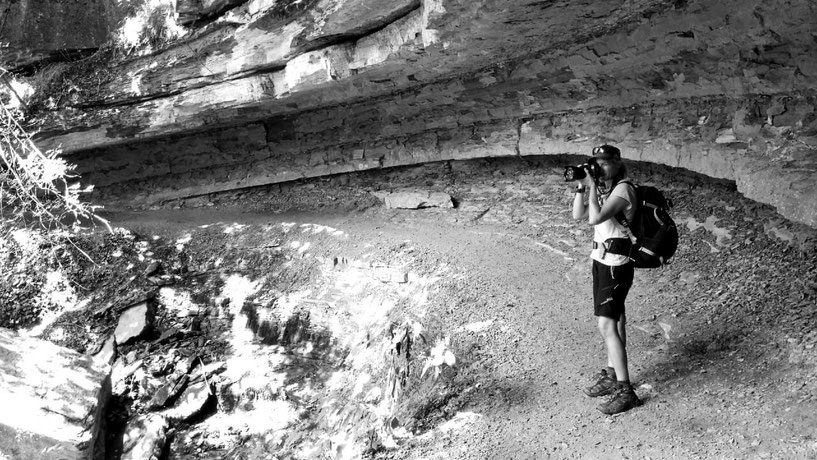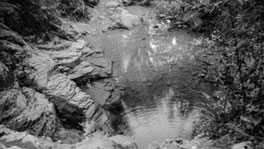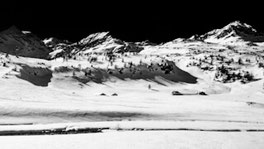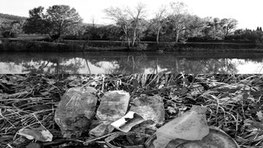
Written by Ylenia Cantello

For all those who, like me, love walking in nature, it is a great privilege to be able to access mountains, parks and nature reserves.
But it is also a great responsibility to ensure that our presence in such wonderful places has the minimum impact on the natural environment.
This is why it is important that all of us who frequent natural areas know and put into practice some essential principles to respect and maintain the places we visit so that we
can enjoy them not only today, but also other people and in the coming decades.
It is a way of thinking and acting that considers each of us as an element that participates in the unity of the whole, interconnected with every aspect of life around us, and involves the
choices we make in outdoors.
For many people it is a change of perspective that they still resist accepting because it requires leaving one's ego and opening up to a new awareness. And meanwhile the entire
planet claims its right to be respected in its rhythms and balances, and silent nature mourns the destruction of its spaces.
The seven principles of Leave No Trace and Delphicaphoto photo trekking
Leave No Trace is an organization for the ethics of outdoor life, and has the mission of helping people, through their education, to take care of and protect the land.
Leave No Trace indicates the good practices that anyone who frequents natural environments should follow to leave no trace of their passage.
The seven principles are as follows:
- Plan ahead and be prepared
- Travel and camp on durable surfaces
- Dispose of waste correctly
- Leave what you find
- Minimize the impact of campfires
- Respect wildlife
- Be respectful of other visitors
© Leave No Trace www.LNT.org
In my photography activity and during photography treks I follow the Leave No Trace principles and invite participants to do the same.
Each photographic trek is designed, prepared and guided with respect for nature always in mind, starting with the low number of participants, so that, at the end of the day, the impact on the environment is minimal.
I carefully explore and choose the most evocative places where I can take participants on photographic treks to offer evocative experiences and I teach them not to share the exact location (geotag) from which they take photos, to avoid many people going to the same place without regard for the environment and for the principles of Leave No Trace.
Rather, I propose that they themselves become an example for other people by teaching them to follow ethical behavior in nature.
Anyone can start their own revolution starting from these seven principles, because it is possible to visit beautiful places, walk on mountain paths and in UNESCO world heritage areas and enjoy
incredible landscapes by acting with awareness and respecting the place in which they find themselves.
Of course, it is human to make mistakes but the important thing is to understand what we can do next time to protect the places that host us, to leave them even more beautiful and preserve them for years to come.
How to apply the seven principles of Leave No Trace
1) Plan ahead and prepare
This is a fundamental principle because it allows us to enjoy our excursion safely and respecting nature.
In fact, before each photographic trek I check the conditions of the paths and the weather situation, I prepare the topographic map and everything needed for every eventuality. I
also inform the group of participants about what we will do, the places we will go and what specific regulations must be respected, and I invite everyone to familiarize themselves with the Leave
No Trace principles to be ready on the day of the trek.
What you can do:
- ask yourself honestly if you are capable of taking part in a challenging photographic trek or is it preferable to choose a simpler excursion suited to your abilities
- find out about the place we are going to visit and evaluate the type of photographic and hiking equipment you may need to be self-sufficient. In the technical sheets dedicated to individual photographic treks you will find the main information on the necessary equipment and you can also read the advice on How to prepare for photo trekkings →
2) Travel and camp on durable surfaces
This means avoiding trampling on the vegetation on the sides of the marked paths (alpine pastures and meadows, mosses and lichens, alpine tundra, wildflowers, etc.) and camping
in already traveled areas. You can walk on durable surfaces such as bare ground, sand, gravel or rock free of lichens and moss, which remain unchanged even after numerous passages of
people.
During photographic trekking, when the path is narrow, I invite you to walk in single file and for the lunch bivouac it is advisable to occupy only a small area where there is little or no
vegetation.
To reduce your impact on the surrounding environment, shortcuts that cut hairpin bends should also be avoided because they damage the soil, increase erosion and accelerate the
vertical flow of rainwater down a steep slope.
3) Dispose of waste properly
Even today there is a need to reiterate the concept that, when you go on an excursion in a natural environment, you need to take your waste, put it in your backpack and take it home to dispose of
it correctly. And yet too many people still think that nature is their personal landfill.
Everything we take with us on the way out we must bring back on the way back. Even organic waste, such as fruit waste, takes months to decompose and can harm wildlife as it is not natural in that environment and is unsightly.
We therefore try to prepare the food we will need during the photographic trek so that it does not produce much waste and is packaged in reusable containers that are easy to clean and transport. We bring a bag/container to collect all the rubbish.
Solid human waste must also be disposed of correctly to avoid impact on the territory, water, wildlife and other hikers: dig a hole about 20 cm deep at a distance of about 60 m (about 70 steps)
from sources of water, camp and paths, and when you're done cover it to camouflage it into the environment.
And if, along the way, we find abandoned rubbish, let's take it and take it away to restore nature's dignity and beauty.
4) Leave what you find
Sometimes people can't resist the temptation to take away something from the environment they visit.
As conscious hikers and photographers, however, we know well that nature is not our souvenir shop to plunder but a sacred place to leave as intact as possible after our passage.
What you can do:
- leaves plants, flowers, seeds, pine cones, rocks, burrows, nests, insects and any other natural element you find in their place
- do not modify the environment by building structures or digging trenches in the ground unless necessary for survival
- do not touch or alter artefacts of anthropic origin and of local historical and cultural importance
- do not introduce alien species of any kind
- do not cut into the bark of trees
- take photos: it's the best way to thank nature for letting you share in its richness
5) Minimize campfire impacts
Campfires are not used during photographic treks but it is always good to know how to behave to reduce our impact and leave no trace.
In most natural environments it is forbidden to light fires, but we can use a small portable stove to cook and heat drinks especially during the colder season.
Where it is permitted to light fires, it must still be done in specially designated areas and in the absence of wind. In this case it is always necessary to evaluate the impact it could have on the environment:
- use wood that we already find on the ground, but if we are in the high mountains where wood is rare it is better to let it become food, shelter for animals and decompose
- keep fires small
- always keep the flames under control
- have enough water available to put out the fire
- reduce all the wood to ashes and be sure that the ashes have become cold before leaving
6) Respect wildlife
We hikers and photographers are fascinated by wild animals and always hope to see some to photograph, but there are essential behaviors to follow to respect them and avoid causing serious damage
to them:
- do not approach or follow the animals, but maintain a minimum safe distance that respects their living space (a good method is to extend one arm forward and raise the thumb while keeping the fist closed: if the finger covers the shape of the animal then distance is correct)
- do not feed them: human food makes them fat and causes health problems, as well as making them more vulnerable to predators, changes their natural behaviors and lowers their fear of humans
- store your food and waste safely to avoid attracting animals
- do not disturb or scare by making sudden movements, noise or using calls. However, if you are in an area where the bear is present, making noise can be a useful deterrent to keep it from coming closer, thus signaling your presence
- do not disturb during sensitive periods for the different species (mating, nesting, caring for the young, colder months)
- keep your pet under control or do not bring it with you
Read more in my Statement of Photography Ethics →
7) Be considerate of others
The natural places we visit during photographic treks are shared places and we must be aware that our behavior can make a difference when we are together with other people.
I try to choose less frequented places or days and times when there are fewer people, but it happens that you meet other hikers along the paths.
I tell the participants of my photographic treks that it is essential to have respect for each other, for each other's abilities and difficulties, as well as having a collaborative spirit, ability to adapt and common sense to enjoy the experience in nature 100%.
What you can do:
- be kind and greet those you meet: a nod, a smile or a word is always welcome
- don't take up all the space or block the path and expect other hikers to leave room for you to photograph the landscape: everyone has the right to enjoy the beauty of the place
- if you are going downhill give priority to those coming uphill (and even a little encouragement) and if you are going uphill let those who are going faster than you and want to overtake you pass
- if you encounter animals such as mules, goats, sheep, keep to the downhill side of the path if possible
- do not speak too loudly or make noise that may disturb other people seeking peace and silence in nature
- keep your dog on a leash
If you want to stay overnight in a mountain hut, read some tips on how to behave →
Training with Leave No Trace
Leave No Trace achieves its mission by focusing on educating people when they interact with nature.
Everyone can take part in the courses and workshops that are organised.
Below you will find the certificates of the courses I have obtained.
What can happen if the principles of Leave No Trace are non followed?
🔴 Many natural areas can become no-go zones for hikers and it would be impossible to return to the same place months or years later to take new photographs.
🔴 Alpine meadows and other fragile ecosystems can be seriously damaged by the passage of many people who do not follow the marked path, with loss of grass cover, botanical species and
animals.
🔴 Wild animals may have disappeared due to health problems and diseases or been removed (or euthanized) because they were considered a threat to humans
🔴 Paid permits may be required to access formerly public places.
🔴 The place from which we took our most beautiful landscape photograph could be damaged and no longer accessible, so we would lose a unique angle of view.
🔴 The restoration of a natural environment, if possible, requires many costs and long intervention times which would be avoided if everyone frequented nature and photographed it in a responsible
and far-sighted way.
NOW IT'S UP TO YOU
Each photo trekking gives new awareness of the ethical values of respect and protection of nature.
We enjoy the richness of life that nature gives us and the time has come to reciprocate with love.
With your photographs you can:
- tell the wonderful story of the relationship that exists between each of us and nature
- be an example on how to take care of the environment for those who are still unaware of the impact their actions have
- help preserve the natural places of our shared home and ensure that they still exist for those who want to photograph them in the coming years
Re-read these principles and when you have understood the importance of protecting nature during your photographic excursions, then commit to putting the Leave No Trace principles into practice:
I will be happy to meet you if you want to join the other participants during my photographic treks and become phototrekker.
If you would like more in-depth information on Leave No Trace and its activities, visit the official website www.lnt.org










